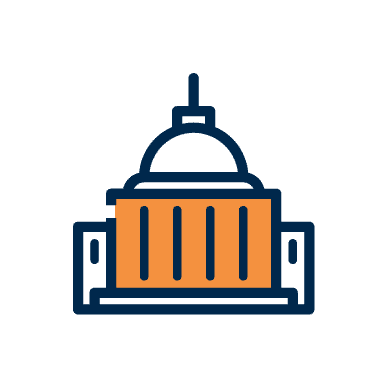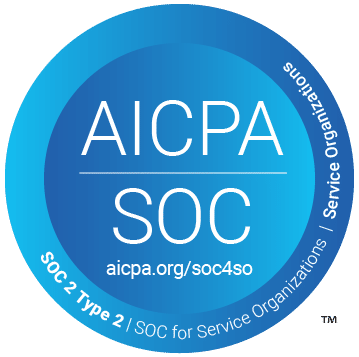During the PHE, access to care was limited and social isolation was real. To increase access, the Centers for Medicare & Medicaid Services (“CMS”) through blanket waivers and state Medicaid programs temporarily expanded the scope of the telehealth services for which those programs will reimburse providers during the PHE. Unfortunately, many low-income Medicare and Medicaid patients did not have cellphones that would allow access to telemedicine services.
An enterprising federally qualified health center (FQHC) teamed up with the FCC and a local charity to find a solution to help its patients access telehealth services and also to have a communication lifeline to facilitate both care and human interaction during PHE lockdowns. The phone allowed only the use of the FQHC application and therefore could not be used to otherwise access the internet and also gave patients the ability to text and call others. The FQHC, which serves predominantly low-income individuals, including Medicare and Medicaid enrollees, received funding to purchase 3,000 of these “limited-use” smartphones. These phones were then loaned to its members to access care online through the FQHC’s application.
The FQHC, concerned that this solution might expose the organization to potential liability from an inducement or kickback perspective, sought an advisory opinion from the OIG. Although advisory opinions apply strictly to the fact situation presented in one case and cannot relied upon as precedent by others, but they do provide valuable insights into the OIG’s interpretation of law and regulation that can be used when assessing the potential risk of business arrangements not specifically address by regulation or OIG guidance.
Guiding Legal Standards
The FQHC was wise to seek the opinion because the OIG made it clear that this practice could have been construed negatively against the organization absent the specific fact situation. The advisory opinion specifically states:
“The Arrangement implicates the Federal anti-kickback statute because Requestor (FQHC) permits patients to whom it has already loaned limited-use smartphones and chargers to continue using the smartphones and chargers free of charge, and this could induce those patients to receive items and services from Requestor that are reimbursable by a federal health care program. Likewise, the Arrangement implicates the Beneficiary Inducements CMP because the Arrangement may be likely to influence those patients to select Requestor for the receipt of items and services that are reimbursable by Medicare or Medicaid.”
As noted in the advisory opinion, the following standards apply that can expose an organization to criminal charges or civil monetary penalties (CMP):
Beneficiary Inducements: The Beneficiary Inducements CMP provides for the imposition of civil monetary penalties against any person who offers or transfers remuneration to a Medicare or State health care program beneficiary that the person knows or should know is likely to influence the beneficiary’s selection of a particular provider, practitioner, or supplier for the order or receipt of any item or service for which payment may be made, in whole or in part, by Medicare or a State health care program. The OIG also may initiate administrative proceedings to exclude such person from Federal health care programs. Section 1128A(i)(6) of the Act defines “remuneration” for purposes of the Beneficiary Inducements CMP as including “transfers of items or services for free or for other than fair market value.” However, Section 1128A(i)(6)(F) of the Act offers an exception that, for purposes of the Beneficiary Inducements CMP, the term “remuneration” does not include “remuneration which promotes access to care and poses a low risk of harm to patients and Federal health care programs” (the “Promotes Access to Care Exception”).
Federal Anti-Kickback Statute: The federal anti-kickback statute (AKS) makes it a criminal offense to knowingly and willfully offer any remuneration to induce, or in return for, the referral of an individual to a person for the furnishing of, or arranging for the furnishing of, any item or service reimbursable under a federal health care program. The statute’s prohibition also extends to remuneration to induce the purchasing, leasing, or ordering of, any good, facility, service, or item reimbursable by a federal health care program. For purposes of the AKS, “remuneration” includes the transfer of anything of value.
OIG Analysis that Cleared Usage of Loaned Smartphones During the PHE
The OIG’s opinion approved the FQHC to continue the use of the purchased smartphones for the duration of the pandemic. However, related to the Beneficiary Inducement CMP risk, the applicability of OIG’s analysis post-PHE is dependent upon whether the expanded telehealth services made available during the pandemic will be covered by Medicare or Medicaid after it ends.
Summarized below is the OIG analysis related to beneficiary inducement and anti-kickback concerns:
Beneficiary Inducement CMP:
The OIG interpreted the “Promotes Access to Care Exception” to apply to: items or services that improve a beneficiary’s ability to obtain items and services payable by Medicare or Medicaid, and pose a low risk of harm to Medicare and Medicaid beneficiaries and the Medicare and Medicaid programs by—
- being unlikely to interfere with, or skew, clinical decision making;
- being unlikely to increase costs to Federal health care programs or beneficiaries through overutilization or inappropriate utilization; and
- not raising patient safety or quality-of-care concerns. The applicability of OIG’s analysis post-PHE is dependent upon whether the expanded telehealth services (made available during the pandemic) to which the smartphones are promoting access will be covered by Medicare or Medicaid following the PHE.
As the FCC recognized, “with remote patient monitoring and mobile health applications that can be accessed on a smartphone or tablet, health care providers now have the technology to deliver quality health care directly to patients, regardless of where they are located.” Additionally, the limited use smartphones were provided only for patients who do not already have a device capable of running the telehealth application required to access telehealth services from the FQHC.
For these reasons, the OIG concluded that, since the telehealth services offered to patients via the limited-use smartphones are currently covered by Medicare and a state Medicaid program, the smartphones and chargers improve the ability of Medicare and Medicaid patients to access telehealth services that are payable by Medicare or Medicaid during the PHE.
The second step is to determine whether the remuneration poses a low risk of harm by:
- being unlikely to interfere with clinical decision making;
- being unlikely to increase costs to Federal health care programs or beneficiaries through overutilization or inappropriate utilization; and
- not raising patient safety or quality-of-care concerns.
The OIG concluded that the FQHC’s arrangement does not appear likely to interfere with clinical decision-making. The advisory opinion noted that:
“While the Arrangement may help patients access telehealth services offered by Requestor that they otherwise may not have received, nothing in the facts suggests that Requestor [FQHC] permitting patients to use the smartphones and chargers skews the clinical decision-making of medical professionals affiliated with Requestor who provide services to patients via telehealth visits. Further, the risk that the Arrangement increases costs to Federal health care programs or beneficiaries through overutilization or inappropriate utilization is low. While the Arrangement may result in increased utilization of telehealth services, there is nothing in the Arrangement to suggest that any such increase in utilization would be inappropriate.”
An addition consideration for the OIG was the limit of the arrangement existing patients who: (i) already have the smartphones (i.e., no new patients may participate in the Arrangement); and (ii) only must receive one service from Requestor within the preceding 24-month period to remain eligible to continue using a loaned smartphone. These facts, in combination with the limited functionality of the smartphones and the requirement for patients to secure funding for voice and data services through a source other than the FQHC, reduce the risk that patients will seek out services from the FQHC solely to maintain use of a loaned smartphone under the arrangement and thus mitigate the risk of overutilization or inappropriate utilization.
Anti-Kickback Statute
The OIG found that the arrangement did not fall within a safe harbor to the Federal AKS. However, it concluded that the arrangement presents a minimal risk of fraud and abuse under the Federal AKS for a number of reasons, including:
- the FQHC received funding from the FCC and a local charity —both entities with no financial interest in patients receiving services from the FQHC —to purchase smartphones needed to provide telehealth services in response to the PHE.
- The FQHC certified that it has used the funding in compliance with all requirements imposed by the FCC and the charity in connection with receiving the funding.
The OIG clarified that even though the FQHC will continue permitting patients to use the smartphones after the PHE, there is nothing in the facts to suggest that—after the PHE has ended— the FQHC will use the smartphones as a way to inappropriately increase utilization of federally reimbursable services.
Conclusion
As noted in the analysis, while the exception related to care access that clears the FQHC of potential exposure under the AKS may not survive beyond the PHE, the reasoning of the OIG not to impose CMPs related to potential beneficiary inducements would remain in effect after the pandemic. The insights provided by this advisory option offer plans and providers with the non-binding but highly instructive analysis that can be used when they consider opportunities to expand telehealth access to low-income federal program participants in the future.



































